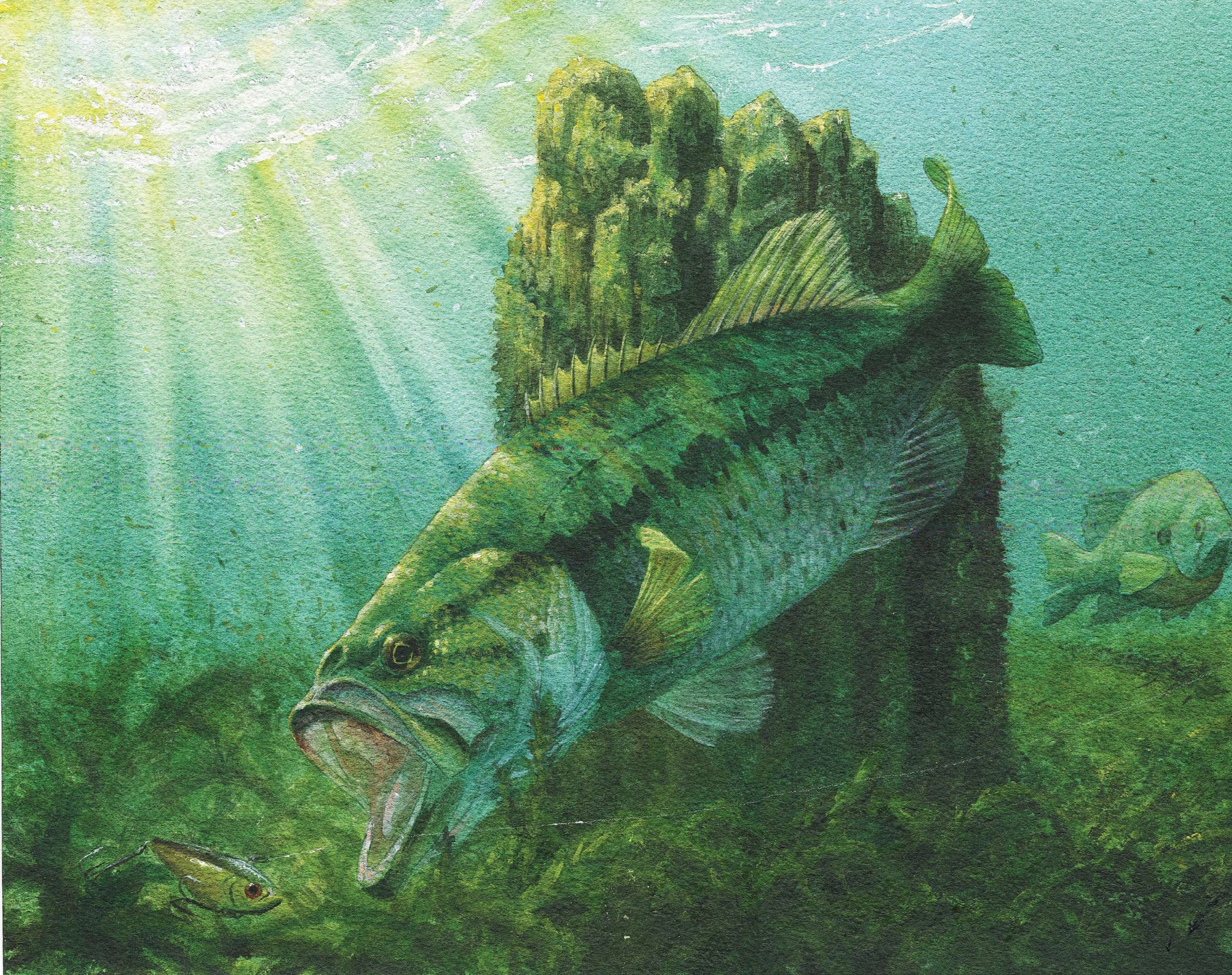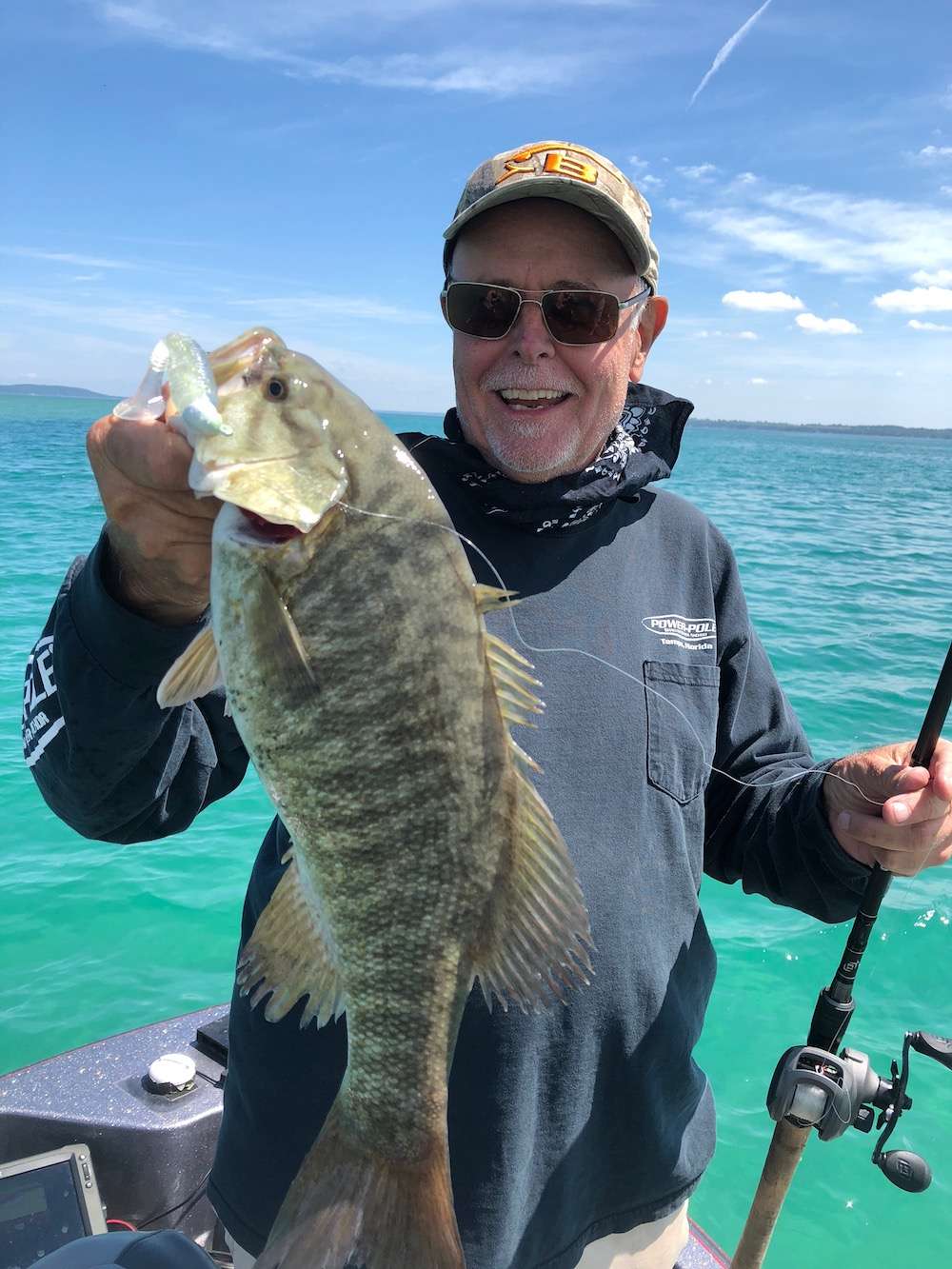
Most weekend anglers use lipless crankbaits like the Bill Lewis Rat-L-Trap, Lucky Craft LVR and Strike King Red Eye Shad mainly when targeting active bass during spring and fall. But with a few tackle, location and presentation adjustments, these noisy, hard-throbbing lures can be deadly in winter, as well. Here’s how a four-time Classic champ fishes ’em for coldwater lunkers.
Presentation
Here’s the breakdown on KVD’s winter lipless crankbait presentation.
Make a long cast to your target, engage the reel, then let the lure fall to the bottom on a tight line.
Once the lure hits bottom, sweep the rod to the side, quickly reel up slack line and repeat, moving the bait toward you in a yo-yo fashion. Most strikes will occur as the lure sinks back to the bottom.
If the lure hangs up in grass or wood cover, you can usually rip it free with a sharp stroke on the rod; this often triggers a reaction strike.
In extremely cold water (upper 30s to low 40s), spool your reel with large-diameter 17- to 20-pound fluorocarbon line so the bait sinks more slowly, and fish it closer to the bottom with less violent hops and a slower cranking speed.
The go-to lure
Credit pro Kevin VanDam, the biggest all-time money winner on the pro circuit, with expanding the boundaries of lipless crankin’ into the winter months. He won the February 2010 Classic at Lay Lake, Alabama, with lipless crankbaits. “Rather than probe thick cover with a weedless bait, I tend to rely on a faster, ‘power fishing’ approach during tournament competition year-round,” KVD told Bassmaster.
“My go-to fishing style involves combing large structures like flats and points with a lure designed to be fished horizontally, rather than vertically like a jig.” VanDam’s preferred lure for this tournament tactic is a lipless crankbait. “It has the realistic profile and flash of a live baitfish that attracts actively feeding bass, and its loud, chattering sound and intense vibrations also trigger reaction strikes from sluggish bass in cold, murky water. Unlike a lipped crankbait, which floats at rest, a lipless crankbait sinks, and its pointed-nose design lets you practically drag it across the bottom without constantly hanging up. This makes it especially deadly during winter, when bass tend to be heavily bottom oriented.”
VanDam’s favorite lipless crank for winter application is the Strike King Red Eye Shad, a lure he helped design. “The Red Eye Shad is unique among lipless crankbaits because it has a lifelike wiggle when it’s falling, which is when most strikes occur during winter. And, it’s exceptionally well balanced, so it resists flipping over on its side and tangling its hooks in your line when you hop it. Two dynamite winter colors are gold sexy shad, which I like on sunny days and in fairly clear water, and chili craw, which works well on cloudy days and when heavy winter rains send cold, muddy runoff spilling into the lake.”
Tackle choices
During winter, VanDam fishes lipless crankbaits on a 7-foot medium action cranking rod, a baitcasting stick with a powerful butt section and a fairly soft tip. “You don’t want to use a real stiff rod with these lures because sluggish winter bass tend to inhale them as they’re falling, and the soft tip section prevents you from jerking the bait out of the fish’s mouth when you feel the strike. Plus, these lures are capable of drawing strikes from monster bass in winter, and the softer rod provides greater shock absorption to wear down a lunker quickly.” While many anglers fish lipless crankbaits on high-speed baitcasting reels, KVD employs a slow-speed (5.3:1) reel during winter tournaments. “The 5.3:1 reel is critical in cold water because it not only moves the bait more slowly, it has greater winching power when battling a big fish. I’ll spool the reel with fluorocarbon line testing from 10 to 20 pounds, depending on water clarity and depth of the fish.”
VanDam’s ideal winter cranking venue is a reservoir tributary arm with a mixture of structural features, including secondary feeder creeks, channels, flats and pockets (shallow shoreline indentations). “The tributary where I caught my fish during the 2010 Classic had both coontail moss and stumps, but cover wasn’t the only key; I also caught bass off slick mud banks, gravel flats and shellbeds, all of which are typical winter holding places for bass in flatland reservoirs. All my fish came from 2 to 10 feet of water, belying the notion that winter bass are always deep.”
Originally published in 2016.





